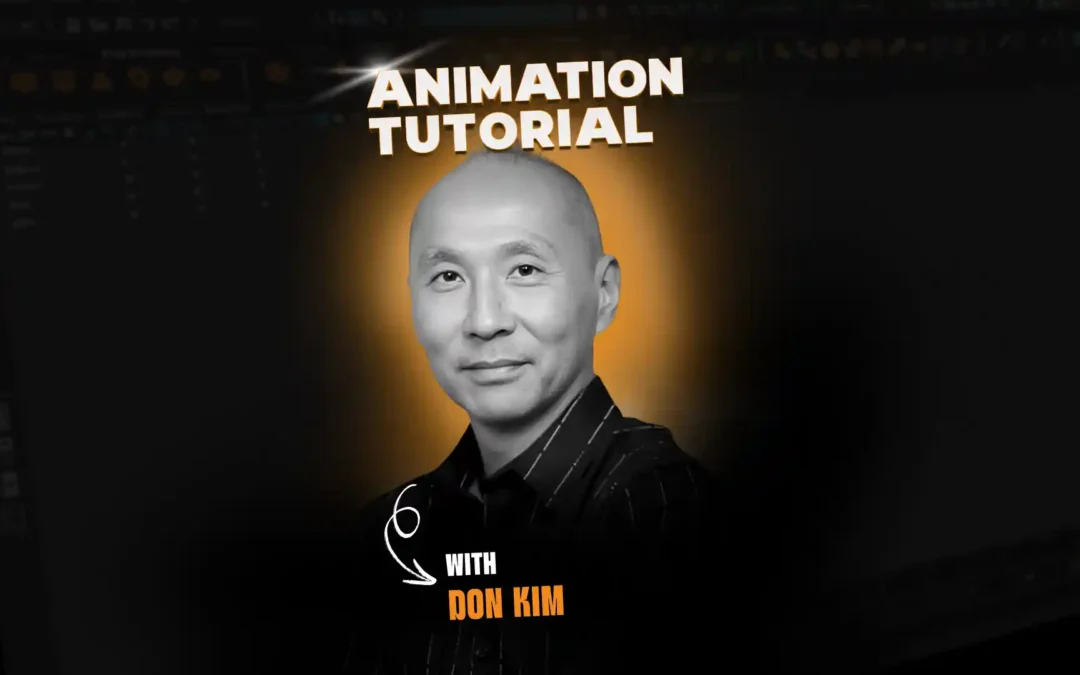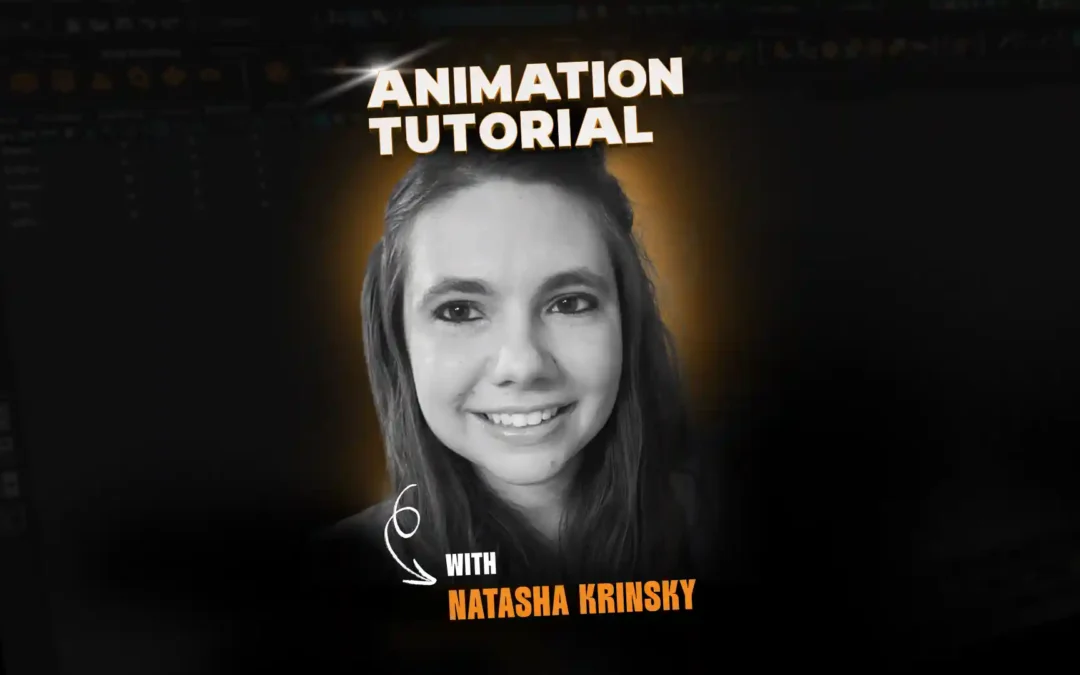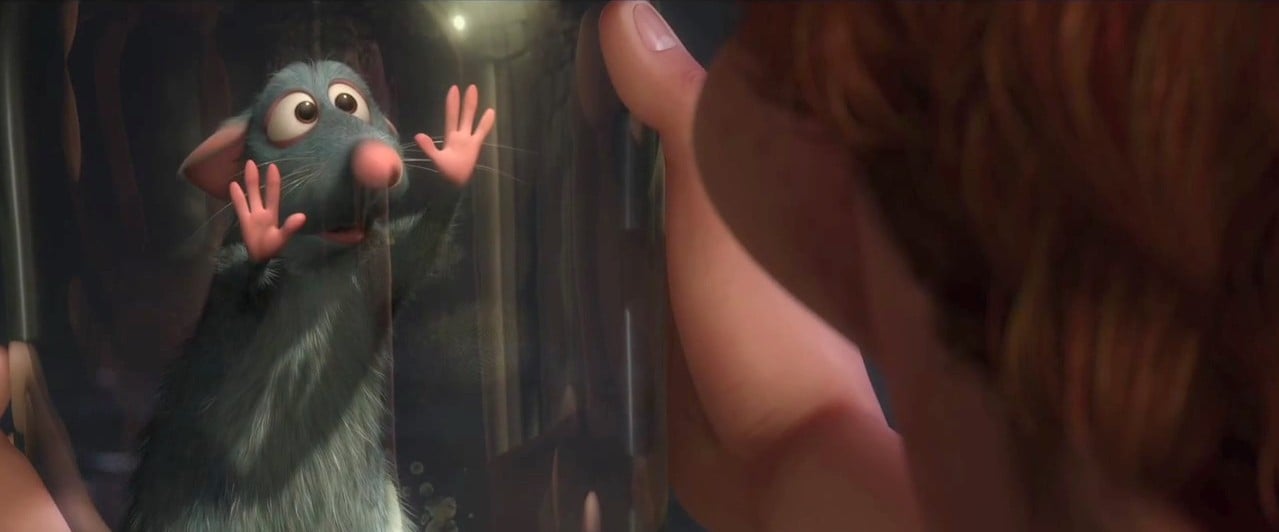
When you’re creating a performance for a character, how do you decide how many poses to use? The problem is that it’s very easy to go overboard. There needs to be enough breathing room to allow for the character’s brain to process their thoughts. Learn how to choose—and make the most of— poses for an acting shot from Dana Boadway Masson, owner and director of Killerjellybean Animation!
When you are creating a performance for a character, how does an animator decide how many poses to use? Different inflections in different parts of dialogue can give us all kinds of different ideas for poses. The problem is that it’s very easy to go overboard. Attempting to jam in too many poses in too short a time results in muddy communication, and a performance that feels very “forced”, and “over-rehearsed”, as opposed to something that’s natural and in-the-moment. There needs to be enough breathing room to allow for the character’s brain to process their thoughts about what they’re saying or doing or reacting to.
In that sequence, the character Linguine only has TWO main poses. Yes, that’s correct… only two! Everything else is a more or less intense variation of those same poses. The rest of the movement are gestures that support the inflections of the dialogue—subconscious movement.
So how do you narrow a shot down into such a small number of poses? Well, it all comes down to what emotions the character is feeling during the action of that shot. Does that emotion change? If so, why does it change, when does it change, and to what does it change? It’s really as simple as that. Your body is going to hold a certain amount of energy and muscle tension, depending on how you’re feeling.
Some emotions, like sadness, ennui, fatigue, will generally have very little muscle tension, which will mean the posture will be more slumped over, the arms and legs will seem heavier and less active. Actions will be slower in general.
Other emotions, like anger, excitement, and fear, will have much more muscle tension, which may straighten the spine, or at least hunch the shoulders up, pull in the arms, clench the fists, flex the legs (or stand in a bent-leg position, ready for action). Actions will be faster and tighter in general. So while there are body postures that make you think of particular emotions, you can certainly play around with posing, as long as you keep the sense of muscle tension that corresponds with that emotion. As always, rules are meant to be broken, and this is no exception, but my suggestions will give you great starting points.
So in the shot with Linguine, he has two basic thought processes going on during the entire sequence. 1) “YOU, the RAT… what did you DO?!”…where he is leaning forward and clutching the jar tightly and staring straight into the jar at the rat…
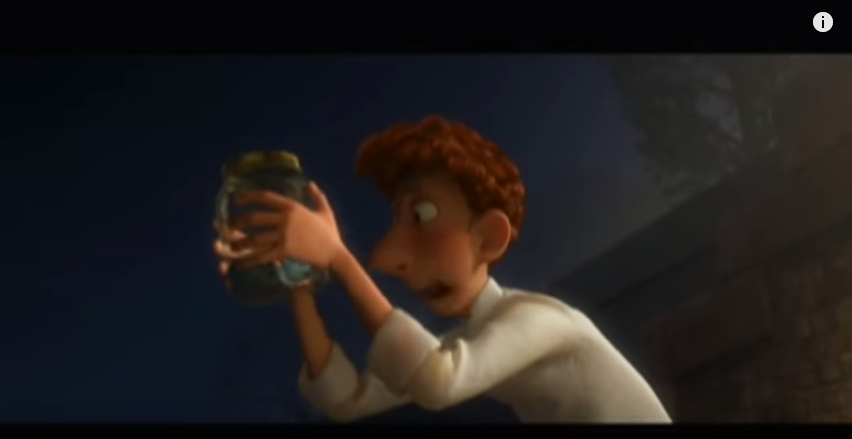
Example from Ratatouille © Pixar 2007
And 2) “ME, they will expect that I can do this again! But I have no idea how!” So for the first pose, he is hunched over, focused on the rat in the jar, and speaking to the rat. And for the second pose, he clutches the jar tight to his body, stands more upright, and isn’t really focused on anything external…he’s talking more to himself.
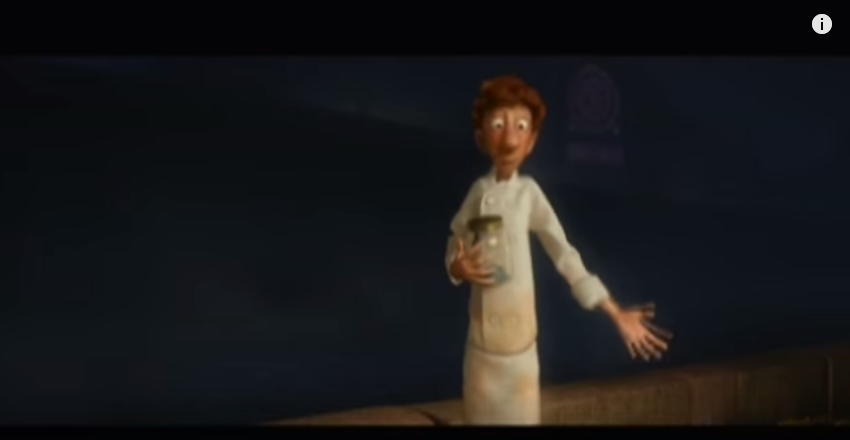
Ratatouille © Pixar 2007
As the sequence progresses, the intensity of Linguine’s emotions fades. But until he decides to just ‘give it up’ at the very end of this sequence, he is at all times in either pose 1 or pose 2. The variations of these poses change as the intensity changes, and the muscles hold less and less tension as the sequence goes on. The movement changes from being tighter and quicker, to slower and less deliberate.
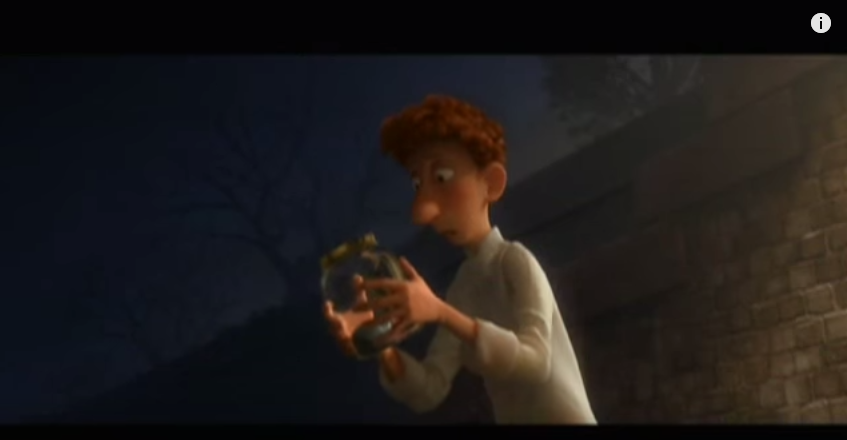
Ratatouille © Pixar 2007
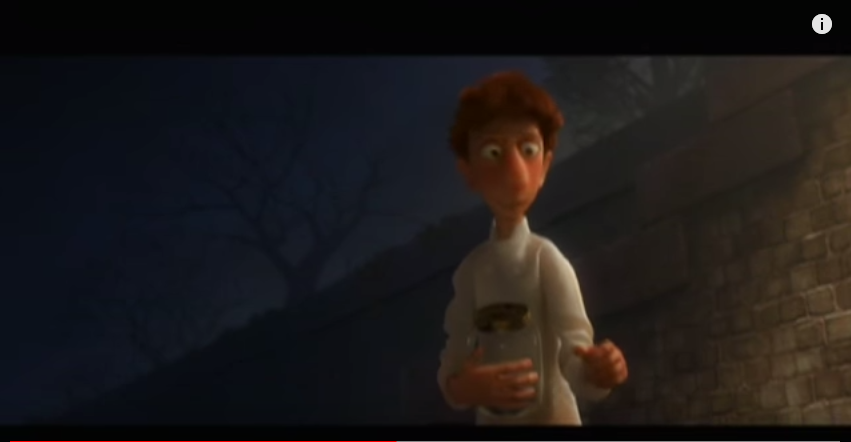
Ratatouille © Pixar 2007
Everything else that happens within these poses are gestures. These gestures support the main expression of the character and the inflection of the dialogue. They are hand gestures, shoulder shrugs, head shakes. These gestures are generally a result of the subconscious expressing itself, and as a rule, they tend to happen very slightly after the main inflection to which they are referring.
If you watch carefully, each of these arm/shoulder/head gestures are attached to the body as well. There is generally a weight shift that gains the momentum needed to make those gestures feel like they are a part of the overall body expression, and not just the arms moving around like they are controlled by a marionette puppeteer. These weight shifts also serve to engage the lower body in the acting, because even in those cases where we can’t see his legs, we can still feel their presence off-screen. The more engaged the entire body is in the performance, the more convincing your character will be.
The gestures also serve to add layers of rhythm to the shot. The layers are very much like an orchestral score. You have the main pose changes as the bass rhythms that are the foundational rhythms in the shot, the gestures as the main melody rhythms, and tiny small little staccato movements like blinks, eye darts, and head shakes are sprinkled on the top layer like xylophone or piccolo on the top end of the score. The rhythm layers provide a depth to the shot that will make it a joy to watch—it will dance for your audience. If you listen to the dialogue for the shot on loop a whole bunch of times on repeat, it starts to take on a more abstract form where the phrasing and rhythms of the speech becomes much more obvious. So doing this before you begin planning your shot can really help with working out all of those layers of rhythm.
The more engaged the entire body is in the performance, the more convincing your character will be.
Beats of stillness during the shot are also very important. I call these micro-pauses. Micro-pauses are those tiny beats of time where the character is quite still, while there is a thought process formulating. Any time the character is trying to come up with the right words to say, or when something happens that they are going to have a reaction to, or when they are trying to come up with a plan to get out of a situation are, or when their attention is about to shift to something else, are all examples of places where micro-pauses are important. Those are the moments when the character is lost in thought. Those thoughts can often happen very quickly, so they can be extremely short. But it is SO important for them to be there, so that the audience can read that this character is thinking and living in the moment. Making them believe that their brains are active is key for making the characters feel alive.
These micro-pauses are also instrumental in the layers of rhythm! They provide punctuation. The beats of silence in music are just as important as the music itself—they provide the context. And so it is in dance, and the negative space in graphic design…you get my point.
So in conclusion:
Simplicity in the choice of poses = good!
Variation in the layers of rhythm = good!
Micro-pauses = good!!!
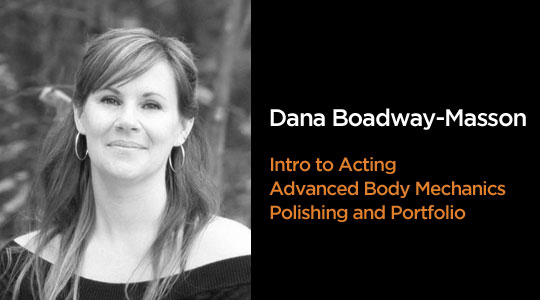
Want to be learn from professional animators like Dana?
Start your animation journey by learning with professional animators from a variety of studios and career paths! Get more information about Animation Mentor’s Character Animation Program.
